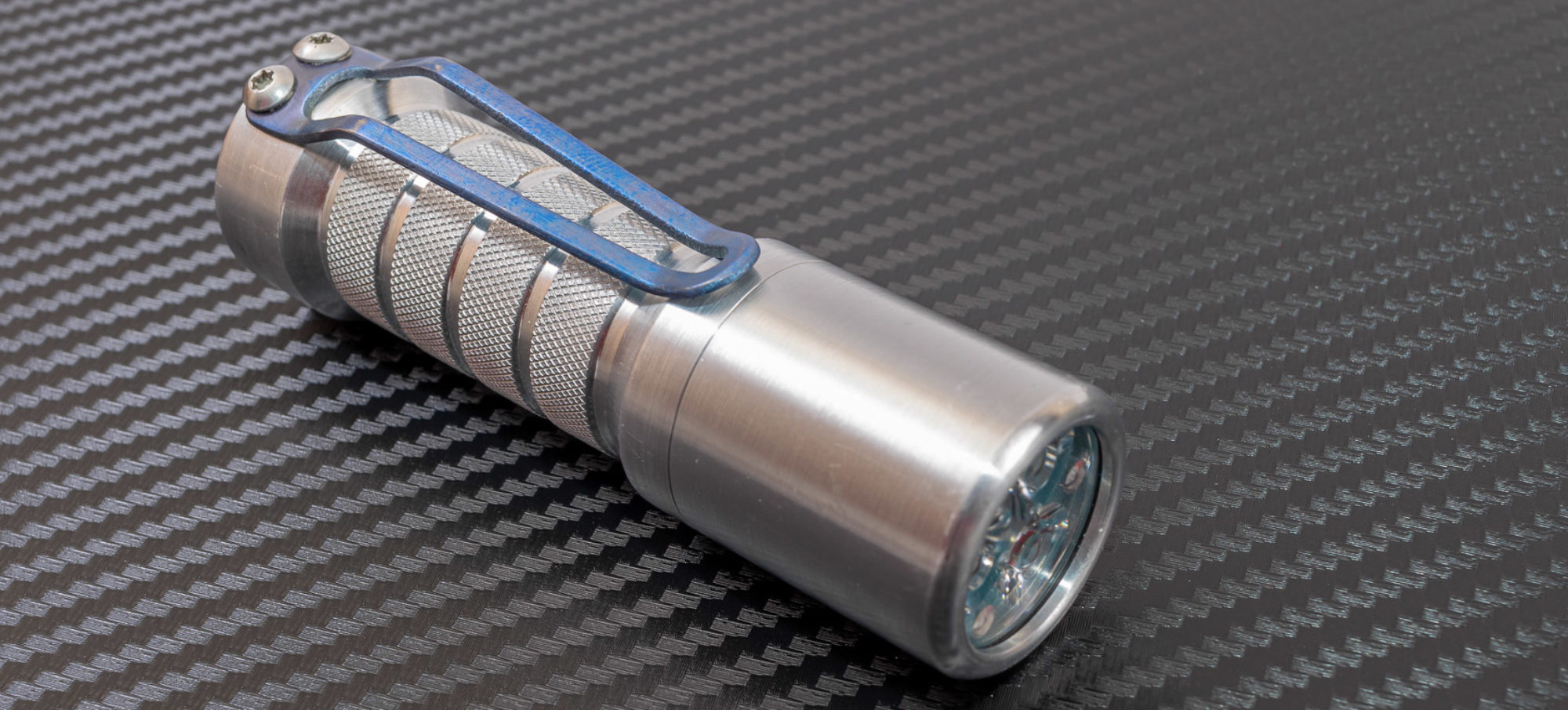For today’s review let’s look at the new Thrunite Archer Mini, an AAA-sized light with a tail switch, sealed 10400 lithium ion battery, and integrated charging. Thanks to Thrunite for sending this to me to take a look at with you.
Watch this review on YouTube:
Follow me on Instagram: https://www.instagram.com/liquidretro/
Join the Facebook Page: https://www.facebook.com/LiquidretroReviews/
Follow me on TikTok: https://www.tiktok.com/@liquidretro1
Enjoy this review? Buy me a Coffee/Beer: https://www.buymeacoffee.com/Liquidretro
Pickup the Thrunite Archer Mini on Amazon at https://amzn.to/3MlIJwK
Packaging & Accessories
Here is the packaging it’s just a thin white box with a pull-out plastic tray. The only accessories that come with the light are the pocket clip, USB-A to C charging cable, and manual. The battery is preinstalled and sealed (nonreplaceable).
Construction and Design
This is a simple flashlight in terms of design. It looks like the head or tail might unscrew but they are sealed. The light is smooth with no knurling or grip, to be honest, I don’t miss it here. The eswitch in the tail does stand proud and this can cause some accidental activations in the pocket so you will want to use lockout.
The head of the light unscrews enough to expose the USB-C charging port and LED indicator light. It’s a captured design so it doesn’t screw off entirely. There is a retention ring that can be unscrewed on the front of the light to remove the TIR optic and expose the LED.
Retention & Carry
The light features a snap on dual direction pocket clip that fits only in the tail position. It carries in the pocket deeply. I will note that with the raised and exposed button, I had issues with this light coming on in my front pocket unintentionally fairly frequently if the light was not in lockout mode. The good news is lockout is easy to access by just holding the button while the light is on until it shuts off and blinks twice. There is also a lanyard in the package if you wish to use it.
Size & Weight
I measured the length of this light at 83mm, diameter at the minimum on the body at 14mm, and maximum diameter on the head at 17.2mm. Weight with the battery and clip came in at 35.9g just 1.26oz. The light is IPX8 water-rated and drop rated to 1.5M.
LED & Beam
The Archer mini is using an SST20 LED with a TIR Optic. I measured the tint at 5594 CCT on my Opple meter and a RA (CRI) of 63. So surprisingly on the cool side of neutral white. However, the LED does have a tint that’s pretty green, especially on lower output modes, a known characteristic of the SST20. The beam is a pleasant chape out of the TIR optic, good for the range of tasks this light will be doing. There is a very minimal amount of PWM here on low, and none on high.
Output Table
Heat & Runtime
I did my runtime tests with the internal 320mAh battery. Turbo stayed near the rated number just shy of 3 minutes before stepping down to 150 lumen output for 50 minutes and then stepping down to zero for a full runtime of 1:07:00. Heat during this time peaked at about 31C.
I also did a comparison with high vs low modes. As you would expect low at only 20 lumens lasts a considerable amount of time 8:26:00 and is very consistent.
UI
The UI here is very simple but different from what I have seen on most other lights. It’s a 2 mode light and from off a single quick press turns the light on in low, to get to High, you just double press while on or from off. To step down to low from high you have to shut the light off and start from the beginning. While on if you long-press when turning it off, the light will go to lockout mode without a visual indicator. So for me, this is frustrating, only because it’s not how I expect the light to use. Most people won’t have an issue with this.
Recharging
The Archer Mini has onboard USB-C charging that can be found, after partially unscrewing the captured head of the light. Underneath you will see the charging port, and a small LED opposite it to give charging status when recharging. It stays red when charging, and goes blue when charged. The light charges with no issue via C to C cables as well.
Recharging the sealed 320mAh 10400 battery from when the light shuts off to full took 1:06:00 at a maximum speed of 0.32A, so right at a 1C charging speed. The light will operate while charging.
Final Thoughts
It’s good to see something different than just a traditional AAA style light. I like Thrunite has chosen to conceal the USB-C charging port here as it is more secure than a more traditional silicone cover. That said it’s a sealed design so you can’t replace the internal 10400 battery, or use Alkaline/NiMH batteries in a pinch which is nice thing to have for a light this size.
The LED here is just slightly cool white, but with a pretty strong green tinge. The beam pattern with the TIR is good. I find the user interface here to be a little frustrating, just because it’s different than 99% of the other flashlights I own and test. This has gotten better the more I use it, and it’s an issue most people won’t have. I think it’s pretty well thought out but for me will take more practice.
It’s pretty affordable for everything it brings, but this isn’t going to be the light I reach for when I want a AAA sized light, just because of the UI and LED tint. That’s not to say this is a bad light, it’s just not something that’s currently going to displace others from my pocket with more traditional UI’.

















































































































